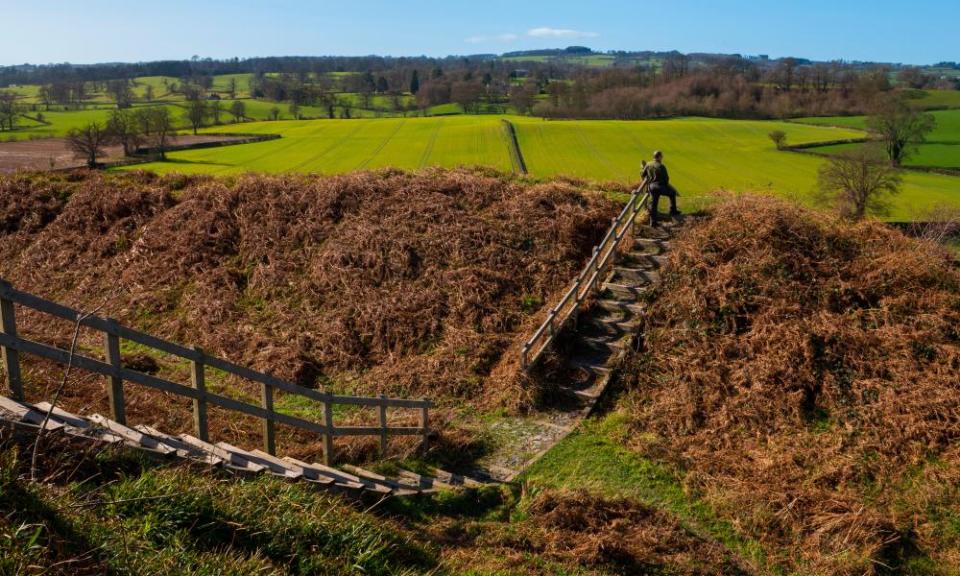Country diary: A floating ghost town with a soaring view of the world
Old Oswestry is the hillfort at the end of the street. Or three very different streets. One is of distinctive red-brick houses for the workers who built the Cambrian railways in the steam-driven 19th century. One is the line of Wat’s dyke, a 40-mile earthwork that runs through the Marches from north Shropshire to the Dee estuary, in parallel to the more famous Offa’s Dyke, and may have been raised in the border-obsessive eighth century. Another, in the imagination, is a line of fortified settlements with particular earth ramparts constructed during the tribal paranoia of the iron age across Europe and Britain.
Where these streets converge, under the sharp blue of a January sky, Old Oswestry stands as the hill of its own fort or a fort of its own hill. Rising from a plain with a soaring view of a world, it is a place where history has not finished with us yet.

What does “old” mean, as in Old Oswestry? This sheep looks old. With its one horn and inscrutable expression, the black-brown-grey fleece of the Soay-Hebridean crossbreed places it in the prehistoric era rather than in modern agriculture. Those horizontal pupils that mirror the layers of vast earthworks and the ring of far hills, they’re old. The crows are old. The little frozen ponds between the bulwarks, the beast-sculpted hawthorns, the bracken glowing sunset-red, the dried seedheads of wood sage: these things are old.
They are things for whom time still matters to life, a question as vital as sunlight fading into winter dark. This place was first inhabited by people in Neolithic times – before that everything was new; something within the mound remains ineffably new. Old Oswestry is a floating ghost town: the story of a people who lived here for a thousand years. They could see smoke rising from other such settlements 20 or 30 miles away; now it’s an ancient monument to wraiths.
Above the long shadows of oaks in fields, industrial estates, farms and the growing town, there is a ringed green shimmering between history and the preternatural. The sheep and the crows are not ghosts – they have not finished with us yet.
• Country Diary is on Twitter at @gdncountrydiary

 Yahoo News
Yahoo News 
